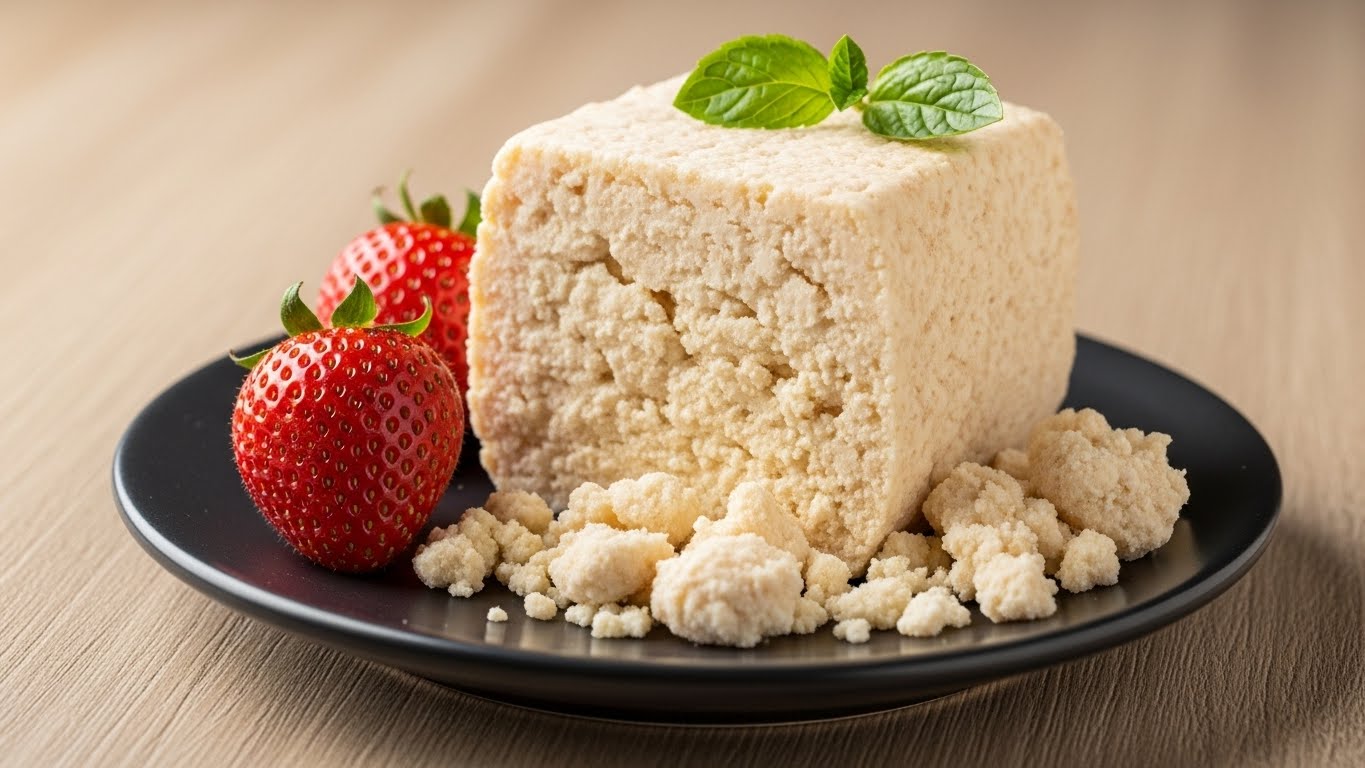Blog
Is 2D Animation Services Worth the Investment?

Cost vs. Value: Are 2D Animation Services Worth the Investment?
When brands invest thousands in digital marketing campaigns, shiny websites, and social ads, one medium consistently outperforms others in engagement and ROI: 2D animation services. It’s no longer just a design gimmick or a child’s cartoon domain. It’s a marketing powerhouse that fuels conversions, drives storytelling, and builds brand identity across platforms.Still, many businesses hesitate. The question isn’t just about expense. It’s about value. Let’s decode the dynamics behind the cost of 2D animation and whether it brings ROI that justifies the budget.
2D Animation Is Not Just Motion, It’s Strategy
A high-quality 2D animation service delivers more than attractive visuals. It’s a calculated move in your communication strategy. Brands often mistake it for mere movement design. But in truth, 2D animation acts like a multi-layered message system; it simplifies, engages, explains, and entertains, all in one go.It compresses complex narratives into digestible, dynamic content. Technical processes, brand stories, product launches, and 2D animation make that memorable and magnetic.
What Is 2D Animation and Why Does It Matter in Marketing?
Before we dive deeper, let’s address this: What is 2D animation?At its core, 2D animation creates moving pictures in a two-dimensional space. Unlike 3D, where objects have depth, 2D visuals rely on flat graphics and illustrations brought to life through motion.But here’s where the shift happens. In marketing, 2D animation is not just flat art that moves; it’s a bridge between your message and your audience’s attention span. Social media posts? Emails? Product explainer videos? 2D animation makes them pop.
Cost Per Frame? Think Cost Per Impact
You’ve probably encountered packages offering 2D animation services ranging from $300 to $5,000 per minute. That’s a broad range but reflects more than just price disparity. It reflects value.
You’re not buying frames. You’re investing in:
- Scriptwriting and storytelling
- Voiceovers and sound design
- Illustrations tailored to brand guidelines
- Transitions that match your brand’s tone
- Visual hooks that keep viewers watching till the end
Cutting corners might seem budget-friendly upfront, but it almost always compromises message delivery. When a single animated explainer video can increase conversion rates by up to 20%, that initial cost suddenly looks more like a strategic investment than an expense.
Real Businesses, Real ROI
Let’s talk results. Tech startups often turn to 2D animation to simplify product features. Healthcare companies use it to build patient trust. Edtech platforms make dry concepts come alive with visuals.
Here’s how 2D animation services deliver returns:
- Brand Recall: Animated videos boost memory retention by over 50%.
- SEO Uplift: Websites with animation see increased average session times.
- Sales Enablement: Explainer videos cut through objections faster than sales pitches.
- Social Engagement: Animated content often performs 2x better than static posts.
Budget Breakdown: What Are You Actually Paying For?
Hiring a team for 2D animation services might feel pricey, but the cost includes much more than animation alone. Here’s a breakdown of where your investment goes:
- Concept Development – Custom storytelling to match your brand
- Scriptwriting – Professionally written content for clarity and impact
- Voiceover Talent – Clear, expressive narration to guide the message
- Storyboard Creation – Scene-by-scene visual planning
- Custom Illustration – Unique artwork aligned with brand visuals
- Animation & Motion Design – Synchronized movement, expression, and pacing
- Sound Effects & Music – Adding mood and polish
You’re not just buying a video. You’re buying a toolkit that sells for you, 24/7, across platforms.
Who Should Invest in 2D Animation Services?
2D animation isn’t a niche solution; it fits nearly every industry. Startups, eCommerce stores, SaaS platforms, B2B companies, healthcare providers, educators, and non-profits benefit when storytelling meets motion.If your goal is to communicate a message quickly while holding attention and improving retention, 2D animation services deliver measurable outcomes. It’s especially useful when you’re dealing with:
- Product launches
- Service explainers
- Social media engagement
- Internal training
- Customer onboarding
Competitive Edge Through Animation
We live in a scroll-happy world, and static content just doesn’t stick anymore. So what gives brands an edge? Movement, emotion, and clarity, and 2D animation deliver all three.Unlike live-action videos, which may require locations, actors, and hefty post-production costs, 2D animation services are flexible and limitless. Do you want a dancing tomato for your grocery app or a talking briefcase explaining your B2B SaaS? Animation makes it happen without location permits or budget-draining logistics.More importantly, it ensures visual consistency across campaigns, platforms, and messages, which is gold for brand recognition.
The Versatility of 2D Animation Services
One of the most underrated aspects of 2D animation is how easily it can adapt to multiple formats and platforms. A single animated video can be sliced into:
- Instagram Reels
- YouTube Shorts
- LinkedIn posts
- Landing page intros
- Email GIFs
- Paid ad snippets
This cross-platform repurposing means the value of a single 2D animation service goes far beyond its runtime. You get evergreen content that stays relevant, clickable, and shareable across marketing ecosystems.
Data Doesn’t Lie: Why the Numbers Back It Up
Let’s talk hard facts.
- 88% of marketers say videos give them positive ROI.
- 95% of information is retained when delivered via video vs. 10% when read.
- 2D explainer videos increase landing page conversions by up to 80%.
The numbers tell the same story every time: 2D animation services pay off.
Cost Saving Over Time
While upfront costs may be expensive, 2D animation offers long-term value. You create one well-crafted animation that works for you repeatedly across months or even years.There is no need to reshoot, no actor availability issues, inconsistent lighting, or set problems. For updates, just tweak the assets digitally.This lowers the cost-per-view over time, making animated videos one of the most sustainable and scalable content options.
When Is It Not Worth It?
Now for balance. 2D animation services might not be the best fit in cases where:
- You need hyper-realistic product demos (like how a blender crushes ice)
- The content is time-sensitive and low-lifecycle (a sale ending tonight)
- Your brand tone is purely documentary or minimalist
Even then, animation can often be used in hybrid formats; think live-action + animated overlays. So don’t shut the door completely; sometimes, animation is just one part of the solution.
ROI Isn’t Just Views, It’s Value
Let’s redefine ROI.It’s not only about likes, shares, or clicks. It’s about how your message lands. How confidently your brand speaks. How much time does your sales team save because your animation did the hard work upfront?That’s the unseen value 2D animation services bring. They create content that moves not just on screen, but in minds and decisions.
Final Words
So, are 2D animation services worth the investment?If your goal is to amplify communication, stand out visually, and make a lasting impression. From simplified storytelling to long-term scalability, the value extends far beyond a one-time video. It’s a tool that works across industries, platforms, and objectives.In a digital world saturated with noise, moving images that speak quickly and creatively can turn passive viewers into active believers.And that’s an investment that pays off, frame by frame.
Blog
Mebalovo: Hiking Trails and Scenic Views

Nestled in the heart of Russia, Mebalovo is a hidden gem waiting to be explored. With its lush landscapes and inviting trails, this quaint village offers an escape into nature that will captivate any outdoor enthusiast. Whether you are an avid hiker or someone looking for a peaceful getaway, Mebalovo has something special to offer every visitor. From breathtaking views to rich cultural experiences, there’s no shortage of adventures waiting just around the corner. Prepare your hiking boots and pack your sense of adventure as we dive deeper into what makes Mebalovo an unforgettable destination!
The History and Culture of Mebalovo
Mebalovo is steeped in rich history and vibrant culture. Nestled in Russia, this charming village boasts a heritage that dates back centuries.
Originally established as a settlement for artisans, Mebalovo has evolved while preserving its traditional roots. The architecture reflects the unique blend of old-world charm and modern influences.
Local folklore is an essential part of life here, with tales passed down through generations. Festivals celebrate seasonal changes and agricultural milestones, uniting the community in joyful gatherings.
Craftsmanship remains vital to Mebalovo’s identity. Artisans produce handcrafted goods that showcase their skill and creativity. Visitors can often find one-of-a-kind souvenirs that tell stories of the land.
The natural beauty surrounding Mebalovo enhances its cultural landscape, providing inspiration for artists and locals alike. This harmonious connection between history, art, and nature makes Mebalovo a captivating destination worth exploring further.
Top Hiking Trails in Mebalovo
Mebalovo is a hiker’s paradise, offering trails that wind through breathtaking landscapes. One of the most popular paths is the Mebalovo Loop Trail. This route takes you deep into lush forests and presents stunning views of rolling hills.
For those seeking something more challenging, the Cascade Trail offers steep ascents and rocky terrain. The effort rewards adventurers with panoramic vistas that are simply unforgettable.
Family-friendly options like the Riverside Path provide an easy trek along serene waters. It’s perfect for leisurely strolls while soaking in nature’s tranquility.
Wildlife enthusiasts will appreciate trails rich in biodiversity. Keep an eye out for native birds and small mammals as you wander through this enchanting area.
Each trail showcases Mebalovo’s unique charm, making it a must-visit destination for hiking lovers!
Scenic Views in Mebalovo
Mebalovo is a hidden gem for nature lovers. The landscape here is breathtaking, with rolling hills and dense forests that stretch as far as the eye can see.
As you hike along the trails, you’ll encounter stunning vistas at every turn. Each viewpoint offers a unique perspective of the surrounding beauty. The serene atmosphere makes it perfect for capturing photos or simply soaking in the sights.
One particular spot not to miss is the hillside overlooking Mebalovo village. From there, you can watch sunrises painted in vibrant hues or sunsets casting golden light across the valleys below.
Wildflower fields bloom during spring and summer, adding splashes of color to your scenic experience. It’s an ideal backdrop for picnicking or just relaxing after a day of exploration.
Whether you’re seeking solitude or adventure, Mebalovo’s views will leave you enchanted and wanting more.
Local Cuisine and Must-Try Dishes
Mebalovo is not just a feast for the eyes but also for the palate. The local cuisine reflects the rich culture and traditions of this charming village.
Start your culinary journey with “khachapuri,” a delicious cheese-filled bread that’s perfect after a day on the trails. Its warm, gooey center will surely satisfy any hiker’s appetite.
Don’t miss out on “shashlik,” skewered meat grilled to perfection. It’s often seasoned with herbs unique to the region, making each bite an adventure in flavor.
For something sweet, try “medovik,” a layered honey cake that melts in your mouth. Pair it with local herbal teas for an authentic experience.
Each dish tells a story and connects you deeper to Mebalovo’s vibrant culture. Exploring these flavors adds another layer of enjoyment to your visit, creating lasting memories beyond just scenic views.
Accommodation Options in Mebalovo
Mebalovo offers a variety of accommodation options to suit different preferences and budgets. From cozy guesthouses to charming hotels, the choices are plentiful.
For a more authentic experience, consider staying in one of the local homestays. You’ll get a taste of traditional hospitality while enjoying warm interactions with residents.
If you prefer modern amenities, Mebalovo has several hotels equipped with comfortable rooms and essential services. Many boast stunning views right from your window.
Campers will find well-maintained sites near scenic trails for an immersive nature experience. Sleeping under the stars can be magical here.
Don’t miss out on booking early during peak seasons; spots fill up quickly due to Mebalovo’s growing popularity among outdoor enthusiasts and families alike.
Tips for Planning Your Trip to Mebalovo
When planning your trip to Mebalovo, timing is key. The best months for hiking are late spring through early autumn. The weather is mild, and trails are accessible.
Pack wisely; sturdy shoes are a must for the rugged terrain. Don’t forget essentials like water bottles, snacks, and sunscreen. You may also want a camera to capture stunning views.
Consider local transportation options as well. Public transport can be limited, so renting a car or using taxis might enhance your experience.
Engage with locals when you arrive. They often know hidden gems that aren’t listed in guidebooks.
Check out seasonal events happening during your visit—festivals bring culture and vibrancy to the area while offering unique experiences you won’t want to miss!
Conclusion
Mebalovo is more than just a destination; it’s an experience that captivates every visitor. Its rich history and vibrant culture offer a glimpse into the past, while its breathtaking hiking trails invite adventurers of all skill levels to explore the great outdoors. The stunning scenic views provide the perfect backdrop for relaxation or photography.
As you venture through Mebalovo, don’t miss out on trying local cuisine that tells a story of tradition and flavor. There are plenty of accommodation options available to suit your needs, ensuring comfort after a long day of exploration.
Planning your trip can be exciting yet overwhelming at times. With some tips in mind, you can maximize your experience in this picturesque village. Whether you’re seeking adventure or serenity, Mebalovo has something special waiting for everyone who visits.
Blog
Kompama: Different Variations and Their Unique Flavors

Kompama is not just a drink; it’s an experience that tantalizes the taste buds and warms the soul. Originating from rich cultural traditions, this delightful beverage has evolved over time, incorporating various flavors and ingredients. Whether you’re sipping it by a cozy fireplace or sharing stories with friends on a sunny afternoon, there is a version of kompama for every occasion. Join us as we explore the many variations of kompama and discover what makes each one unique. From traditional recipes to creative twists, this journey into the world of kompama promises something special for everyone!
Traditional Kompama: Origin and Ingredients
Kompama has deep roots in traditional cultures. Originating from the vibrant kitchens of Eastern Europe, this drink is a celebration of simple ingredients and rich flavors.
At its core, kompama typically features fermented grains or fruits, providing that unmistakable tanginess. Each region boasts its own variation, often influenced by local produce and customs.
Key ingredients usually include barley or rye for fermentation alongside water and sometimes sugar to enhance the taste. The fermentation process is crucial; it transforms basic elements into something extraordinary.
Traditionally served warm, it evokes feelings of comfort during cold seasons. This beloved beverage brings families together around the hearth, making it more than just a drink—it’s an experience steeped in history and community spirit.
Fruit-infused Kompama: Adding a Twist to the Classic Drink
Fruit-infused kompama brings a vibrant twist to the traditional recipe. By introducing fresh fruits, you can create a refreshing and colorful beverage that excites the palate.
Think citrus—lemons, oranges, or limes add brightness. Their zesty notes perfectly complement the classic flavors of kompama. Berries like strawberries and blueberries offer a subtle sweetness that transforms each sip into an indulgent experience.
Tropical fruits such as pineapple or mango introduce an exotic flair. This combination not only enhances flavor but also adds visual appeal with their vivid colors floating in your glass.
Experimenting with herb infusions can elevate these fruit variations further. Mint or basil introduces freshness that harmonizes beautifully with sweet fruity notes.
These adaptations make kompama suitable for warm days or special occasions, appealing to those who seek something different from the original blend while keeping its essence intact.
Spiced Kompama: The Perfect Winter Beverage
As the chill of winter settles in, spiced kompama emerges as a cozy favorite. This delightful beverage warms both body and soul.
The rich base of traditional kompama is enhanced with aromatic spices like cinnamon, nutmeg, and cloves. These flavors blend beautifully to create a comforting drink perfect for frosty evenings.
Picture yourself wrapped in a blanket, sipping on this fragrant concoction while watching snowflakes dance outside your window. The heat from the spices not only adds warmth but also elevates your mood during those long winter nights.
Pair it with gingerbread cookies or warm pastries for an irresistible treat. Whether shared among friends or enjoyed solo by the fire, spiced kompama is sure to become a cherished part of your winter rituals.
Health Benefits of Kompama
Kompama is more than just a delightful drink; it offers several health benefits too. One of its primary ingredients, tea, is loaded with antioxidants. These compounds help combat free radicals in the body, supporting overall wellness.
The infusion of spices like ginger or turmeric enhances its anti-inflammatory properties. This can aid digestion and boost your immune system during colder months.
If you opt for fruit-infused variations, you’ll receive an extra dose of vitamins and minerals. Citrus fruits can elevate vitamin C levels while berries provide essential nutrients that promote skin health.
Additionally, kompama can be hydrating and refreshing. Staying hydrated plays a vital role in maintaining energy levels and cognitive function throughout the day.
Enjoying this beverage not only satisfies your taste buds but also contributes positively to your well-being!
How to Make Your Own Kompama at Home
Making your own kompama at home is both easy and rewarding. Start with a base of water, sugar, and tea. Choose your favorite tea—black or green works best.
Boil the water and dissolve sugar to create a simple syrup. Let it cool before adding the brewed tea for depth of flavor.
Next, it’s time to get creative! Infuse your kompama with spices like cinnamon or cloves for warmth. If you’re feeling adventurous, add fresh fruits such as lemon or berries for a refreshing twist.
Chill the mixture in the refrigerator for several hours to meld all those delicious flavors together. Serve over ice and garnish with mint leaves for an extra touch.
Experimenting with different ingredients will lead you to discover your personal favorite version of this delightful drink!
Conclusion
Kompama is more than just a beverage; it embodies tradition, creativity, and health benefits. From its rich origins to the intriguing variations that have emerged over time, this drink offers something for everyone. Whether you prefer the classic version or enjoy experimenting with fruit-infused and spiced varieties, there’s no denying its versatility.
Creating your own kompama at home can be an enjoyable experience as well. With simple ingredients and endless customization options, it’s easy to tailor this drink to suit your taste preferences. Not only does it refresh on warm days, but it also warms the soul during colder months.
As you explore the world of kompama, remember to savor each sip and appreciate the diverse flavors available. This delightful drink invites innovation while honoring its roots—making every glass a unique story waiting to be told. So why not dive into making your own variation? You might just discover a new favorite!
Blog
BugsIsDead: The Digital Dilemma We All Face

Welcome to the digital age, where our lives are intertwined with technology in ways we never imagined. Our devices have become an extension of ourselves, keeping us connected and informed at all times. But as we scroll through endless feeds and notifications, a pressing question arises: Are we truly benefiting from this constant connection? The rapid rise of social media has transformed how we communicate, share experiences, and even perceive ourselves. Yet it also brings challenges that can weigh heavily on our mental health.
As screens capture more of our attention each day, it’s becoming increasingly clear that some bugs in this digital world need addressing – hence the phrase “BugsIsDead.” This concept represents not just a call to action but a reminder that while technology enriches our lives, finding balance is essential for well-being. Join me as we explore the impact of relentless connectivity on our mental state and discover practical steps to regain control over our digital habits.
The Rise of Social Media and Its Effects on Mental Health
Social media has transformed the way we connect and communicate. While it offers a platform for sharing experiences, it also brings along significant challenges.
The constant comparison with others can lead to feelings of inadequacy. Scrolling through curated highlights often creates unrealistic expectations about life and happiness.
Moreover, the pressure to maintain an online presence can be overwhelming. Many feel compelled to post regularly, seeking validation in likes and comments. This cycle can exacerbate anxiety and depression.
Cyberbullying remains another serious issue within social networks. Negative interactions can have lasting effects on self-esteem, particularly among young users who are still developing their identities.
As we navigate this digital landscape, it’s essential to recognize these impacts on mental health. Understanding how social media influences our thoughts and emotions is the first step toward healthier usage patterns.
The Dangers of Constant Digital Connection
Constant digital connection can feel like a lifeline, but it often transforms into a double-edged sword. As notifications ping and screens flicker, our focus diminishes. We find ourselves perpetually distracted, unable to engage fully with the world around us.
This unending connectivity can lead to anxiety. The pressure to respond immediately creates stress that seeps into our daily lives. Instead of enjoying the moment, we’re preoccupied with what’s happening online.
Moreover, social interactions shift from face-to-face encounters to virtual exchanges. This change can cause feelings of isolation and loneliness, even in crowded spaces. Authentic connections suffer when relationships are filtered through screens.
The constant need for validation amplifies these issues too. Scrolling through curated highlights of others’ lives fosters unrealistic comparisons. This cycle hinders self-esteem and clouds our perception of reality.
In this always-on culture, reclaiming time away from devices becomes essential for mental well-being.
How BugsIsDead Can Help Combat Digital Addiction
BugsIsDead offers a fresh perspective on managing digital consumption. It provides tools designed to help individuals recognize their online habits and make positive changes.
With engaging features, users can track time spent on apps and websites. This awareness is the first step toward understanding one’s digital footprint.
By setting personalized limits, BugsIsDead encourages healthier usage patterns. Users learn to prioritize real-life interactions over screen time.
Moreover, the platform promotes mindfulness techniques that reduce anxiety related to constant connectivity. Engaging in these practices fosters a sense of control over one’s digital life.
For those struggling with addiction, BugsIsDead creates an environment conducive to recovery and balance. Finding joy in offline activities becomes easier as users gradually unplug from overwhelming stimuli.
Steps to Take for a More Balanced Digital Life
Finding balance in a digital world can feel overwhelming. Start by designating specific times for technology use. This creates a routine that helps you disconnect and recharge.
Consider setting app limits on your devices. Many smartphones allow you to track usage, so take advantage of these tools to understand your habits better.
Incorporate tech-free zones in your home or during meals. This fosters deeper connections with those around you and encourages meaningful conversations without distractions.
Don’t forget about hobbies outside the screen. Engage in activities like reading, hiking, or crafting that require no digital involvement. These experiences can enhance creativity and reduce stress.
Practice mindfulness while online. Pay attention to how certain content makes you feel, and curate your feeds accordingly. Prioritizing positivity helps create a healthier digital environment for yourself.
The Importance of Setting Boundaries
Setting boundaries in our digital lives is essential for maintaining mental well-being. With notifications constantly vying for attention, it’s easy to feel overwhelmed. Defining clear limits can help mitigate this stress.
Creating tech-free zones at home encourages genuine interactions. Designate certain times or spaces where devices are off-limits, allowing your mind a much-needed break from screens.
It’s also vital to manage social media engagement. Curating your feed by unfollowing accounts that drain you can transform how you interact online. Prioritize positive content that uplifts and inspires rather than depletes energy.
Establishing these boundaries fosters healthier relationships both with technology and the people around us. It cultivates an environment where quality time flourishes without distractions dictating every moment of your day.
Conclusion: Embracing the Benefits of Technology While Maintaining Control
As we navigate the complexities of our digital world, it becomes essential to find a balance between connectivity and mental well-being. Embracing technology brings numerous advantages, from instant communication to access to vast information. However, unchecked usage can lead us down a path of anxiety and disconnection from reality.
Understanding when to unplug is crucial. Tools like BugsIsDead offer practical solutions for those struggling with digital habits, helping users reclaim their time and focus. Setting boundaries around device usage fosters healthier relationships with both technology and ourselves.
By being mindful of how we engage with the digital landscape, we can harness its benefits while avoiding pitfalls. It’s about finding that sweet spot—where technology enhances our lives without overwhelming them—and ultimately discovering what works best for each individual in this ever-evolving age of connection.
-

 Entertainment6 months ago
Entertainment6 months agoSflix: How It’s Changing the Way We Watch Movies and TV Shows
-

 Blog4 months ago
Blog4 months agohanime1: The Ultimate Destination for Anime Lovers
-

 Technology7 months ago
Technology7 months agoSimpcitt: The Rise of a Unique Online Community
-

 Entertainment5 months ago
Entertainment5 months agoCrackstreams 2.0: The Future of Free Sports Streaming?
-

 Bills6 months ago
Bills6 months agoWhy Does My Instagram Reel Stop Getting Views After One Hour? How to Fix It?
-

 80s7 months ago
80s7 months agoFavorite 100 Songs of the 80s: (#1) Michael Jackson – Billie Jean
-

 Technology6 months ago
Technology6 months agoAnon Vault: Protecting Your Digital Footprint
-

 Blog6 months ago
Blog6 months agoSimpcitu: The New Age Trend Shaping Online Interactions
